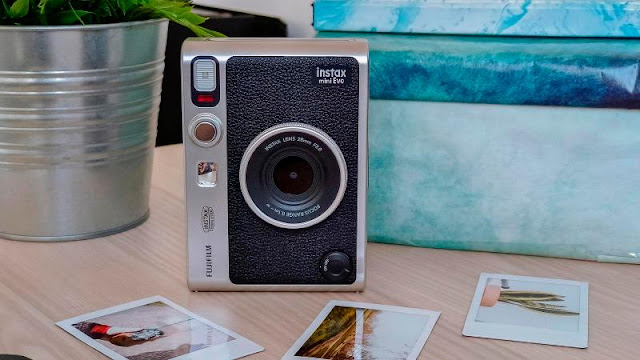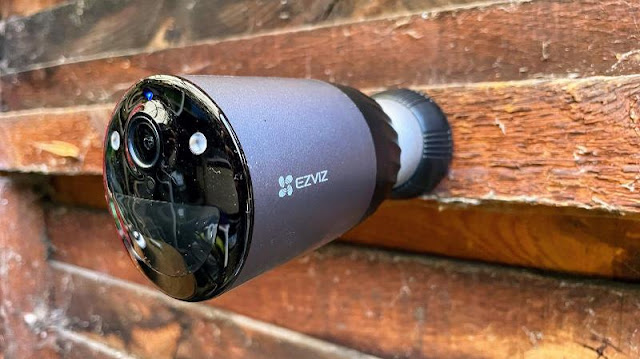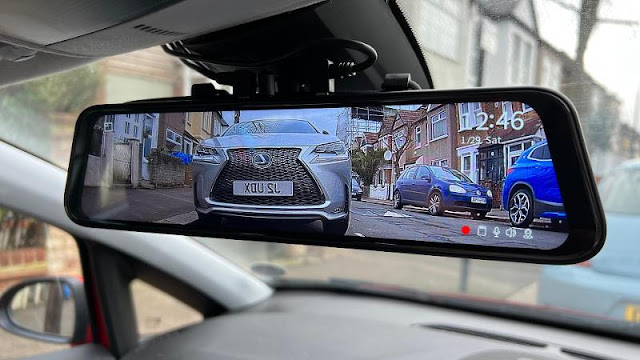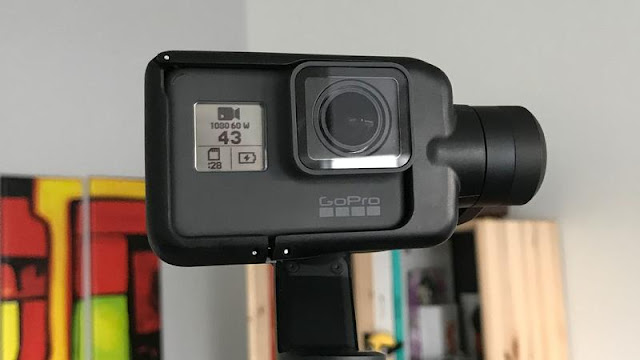These are the best instant cameras we've tested, from modern Polaroids to the best Instax cameras so far.
Instant cameras may have had their heyday in the '70s, but that hasn't stopped them enjoying a massive revival in the last few years.
Not only can you once again buy a new Polaroid camera, but Fujifilm's Instax has become a global phenomenon, and smaller companies like Leica and Lomography have gotten in on the action too.
The downside is that means there are multiple competing film formats, sizes, and brands, and it's hard to know which instant camera is right for you. Luckily for you we've tested almost every camera on the market, and here's what we think.
1. Instax Mini 11
The Instax Mini 11 offers good low-light exposure, a sleek design and easy-to-use controls - all for a reasonable price.
The auto-exposure dial makes low light photography reasonably visible, and the design is slimmer and more refined than its predecessor overall. There aren't any manual adjustments that users can make to the camera, but at this price point that's to be expected.
The Mini 11 prints on Instax's Mini film - which produces pocket-sized polaroid-style photos. This instant camera is a compelling option for younger audiences with not much photography experience.
Read our full Instax Mini 11 review
2. Instax Square SQ6
The Instax SQ6 is Fujifilm's first fully analogue square format camera, and it combines all the strongest elements of the Instax line so far to produce an attractive, capable instant camera at a very friendly price.
The SQ6 takes Instax Square film and packs in an array of shooting styles: auto exposure, selfie/portrait mode, macro and landscape modes, double exposure, and darken and lighten modes. Instax also throws in three colour filters for even more options.
The design is a slick fusion of retro and modern elements that's more understated than the Leica Sofort, and is undoubtedly Instax's best-looking camera since the Mini 90.
Thanks to a refined flash sensor, photos come out bright and crisp, with the best colour reproduction we've seen in an instant camera yet. That means it's not great if you're looking for nostalgic sepia tones, but if you want an instant camera that actually captures the colours you can see in front of you, you won't do much better.
The Instax Square SQ1 is a more recent model with a colourful design and much simpler controls, but since it costs more and has fewer shooting options we still recommend the SQ6.
Read our full Instax Square SQ6 review
3. Lomo'Instant Square
The Lomo’Instant Square is the first instant camera so far to be compatible with two different formats of Instax film. It won’t use both out of the box, but there's a swappable back plate – sold separately – for the camera that lets you install Instax Mini film.
The most striking thing is the design, with a folding body that’s both unique in the current instant camera market and compact when it’s folded down.
In addition to the standard shoot-and-print Auto Mode, you can control the flash, raise and lower exposure, take multiple exposures on a single film print, and do an extended exposure of up to 30 seconds. You also get three set focal distances, a tripod screw for mounting the camera, a set of colour flash filters, and a 10-second timer. There’s a remote control for taking photos remotely, though it requires a battery. The camera itself needs two CR2 batteries, so isn’t rechargeable, which is the major downside.
The wealth of options mean the Lomo’Instant Square rewards accomplished photographers, but Auto Mode is as simple as you could ask for, making it a friendly entry point for anyone hoping to build into more complex shots.
Read our full Lomo'Instant Square review
4. Instax Mini LiPlay
The Instax mini LiPlay is a great digital hybrid instant camera that boasts several features that set it above the competition. The camera is also an instant printer, which allows you to print photos directly from your smartphone via the companion app very easily on to the Instax Mini film.
It’s also generally an easy camera to navigate. The design is user-friendly, and you can choose from a number of different shooting options to enhance your experience. The camera itself is enough to give you a decent-quality image, with a little flair if you wish. However, the design may not be to everyone’s tastes.
The Mini LiPlay lets you record audio and play it back via QR codes, though this feature may only be useful to a small portion of users. It sits just slightly higher than average on our price range, but the flexibility that this camera offers seems worth the extra bump in cost.
Read our full Instax Mini LiPlay review
5. Polaroid OneStep 2
Even by the standards of instant cameras, this is driven by nostalgia. The blocky plastic design screams ‘retro’, though some of the chunky controls cross the line into ‘toy-like’ instead. It’s also massive, and at 460g without film you’ll want a bag to carry this in.
It takes two types of film, i-Type or 600, both of which are made by Polaroid Originals and come in colour and black-and-white.
The prints are big, which is the payoff for how large the camera is, allowing for a bit more visible detail than some of the alternatives. It’s also an instantly nostalgic size - these are Polaroids just as you remember them.
In terms of feature this is simple: you can adjust the flash or set a timer, but that’s it. Colours tend to be washed out and subdued - none of our photos really popped - but that’s arguably just another part of the nostalgia.
The film is expensive, though the camera itself is in line with similar cameras.
Read our full Polaroid OneStep 2 review
6. Lomography Diana Instant Square
The Diana Instant Square is one of the cheapest instant film cameras we've seen. The price alone makes it tempting, but bear in mind that this doesn't include a flash which will come in very handy.
You're best off going for the bundle with the flash, which also looks awesome on the classic Diana black and blue design.
When you consider that this is an interchangeable lens camera, you'll probably be tempted to spend even more to get things like a fisheye lens. If so, you might as well jump to the deluxe kit, which is still cheaper than some rival cameras and comes with a whole host of extras.
Accessories or not, the Diana Instant Square has some cool features including multiple exposures, but it's not very easy to get to grips with especially if you're a beginner.
Getting the right combination of aperture and shutter speed for your lighting conditions can be very difficult so you can easily waste a number of shots getting things correct.
Read our full Lomography Diana Instant Square review
7. Instax Mini 9
The Instax Mini 9 from Fujifilm is the cheapest instant camera out there. The Mini 9 is very user-friendly, making it a good option for any photography beginners - or kids. Its design is chunky and retro, coming in a range of colours.
The Mini 9 takes Instax Mini film, but shooting capabilities are limited. It relies on bright daylight, and doesn't have any zoom capabilities, nor the option to turn off the flash. The camera does however come with some manual lenses that you can attach for things such as close-up shots.
It may not stack up to some of its rivals when it comes to its technical requirements, but if you're looking for a stocking filler that takes nice Polaroid-style photos, then this is by far the most affordable option at the moment.
Read our full Instax Mini 9 review
8. Lomo'Instant Automat Glass
Lomography's Automat Glass Magellan comes in a pretty snazzy black and neon orange setup, but you can find the Automat in a variety of other designs on Amazon.
It comes with a 38mm wide-angle lens with an f/4.5 aperture, but thanks to the standard lens threading you’ll be able to attach other lenses - for example, the included close-up lens.
The Automat uses Instax Mini prints, and captures impressive detail in portrait and landscape shots, but struggles a bit more in close-ups. Low-light photos aren’t great either - even with brightness adjustments, typically the flash either washes the photo out or fails to light it properly.
Where this camera excels is more complex shots. The bulb mode is one of the best, allowing you to expose the film for up to 30 seconds, along with multiple exposures (as opposed to double), letting you expose the film unlimited times before choosing to print.
Entry-level users are unlikely to get the most out of the Automat, and might find it pretty overwhelming at first. But if you’re looking for an instant camera that gives you more complex features to play around with - and think you know how to make the most of them - the Automat offers an awful lot for the price.
Read our full Lomo'Instant Automat Glass review
9. Polaroid Snap
The Polaroid Snap captures the happy middle ground between quality and budget. For less than £100/US$100, you get a likeable 10Mp camera which supports microSD saving, and prints colour photos within a minute - though it's worth noting that this is a digital camera that prints onto ZINK paper, rather than an analogue camera that exposes real film.
Unlike the film used in an Instax Mini 9 camera, ZINK paper uses heat to form images. Each sheet contains micro-crystals that produce either cyan, magenta or yellow hues depending on the intensity and duration of heat applied. When combined, you are left with the final image. This makes printing on the Snap more affordable too.
The colours on Polaroid Snap prints are on the darker side, so it is best for photographing under bright to moderate lighting (though the Snap does have an automatic flash). The Snap is a budget-friendly tech toy best suited for casual point and shoot use, making it ideal for students and scrapbook keepers.
Read our full Polaroid Snap review
10. Instax Wide 300
As the name might give away, the Instax Wide 300 takes photos that are wider than other instant cameras - double the size of Instax Mini photos. The camera itself has to be large enough to accommodate the bigger prints, and Fujifilm has committed to a chunky aesthetic all round, with a large grip and an enormous lens - the Instax Wide isn’t the most attractive instant camera around.
Controls are simple: two levels of autofocus for the 95mm lens, basic flash settings, and the option to reduce or increase exposure. It’s no surprise the Wide 300 excels at longer range, picking up more detail in landscape and building photos than its rivals, but struggling on close-ups or selfies - though the included close-up lens does help.
Portraits can turn out great once you get used to framing for landscape though, with warm skin tones. The new orientation is also great for parties - it takes a lot less work to cram multiple people into the same shot now.
Read our full Instax Wide 300 review
Instant Camera Buying Advice
There are a few factors to consider when you’re trying to buy an instant camera. First up you need to think about how complex you want the camera to be. Some, such as the Polaroid OneStep 2, are simple point-and-shoot devices that don’t give you much control beyond turning the flash off or setting a timer - and the Instax Mini 9 doesn't even let you do that much.
Others get more intricate though, adding in functionality like long exposures, multiple exposures, different focus levels, customisable brightness, and more.
Lomography instant cameras even come with a standard lens thread, letting you attach a range of different lenses for even more flexibility.
All of these advanced features are nice to have, but you have to think about whether you’re the sort of photographer who’s really likely to use them. If you want to play around with multiple exposures or shoot photos in varied conditions then they might be worth it, but if you just want to take photos of your mates at parties, a simpler point-and-shoot will probably be plenty.
Remember that if you don't want to get your head round a whole new camera, you don't have to - you might be better off buying an instant printer, which lets you print photos directly from your smartphone instead.
Digital Hybrids
The next consideration is whether you want a full film camera or a digital hybrid like the Instax SQ10 or Mini LiPlay
There are benefits and drawbacks to both. Digital hybrids let you export photos to other devices, and mean you can get the perfect photo before you hit print - saving you from wasting expensive film.
The downside to that flexibility is that you lose some of the immediacy of a pure film camera. Part of the charm of using film is that you only get one chance - it saves you from fussy posing for the perfect shot. If you’re not going to commit to the old-fashioned appeal, why are you looking at instant cameras at all?
Plus, the quality you can expect from the digital photos you export is pretty low - nothing compared to what you could expect from the camera on a budget smartphone, let alone any of the best phone cameras around.
Film Formats
The final major concern is film formats. The market is dominated by Fujifilm’s Instax brand, which currently produces three sizes of film: Mini (small and portrait), Wide (large and landscape), and Square (mid-sized and, well, square).
Some cameras from other manufacturers - such as Lomography - use Instax film too, so you don't have to commit to a Fujifilm camera to take advantage of the film prints.
The Polaroid OneStep 2 uses its own i-Type film, which sticks close to the classic Polaroid prints - about the same size as Instax Wide, but square rather than rectangular. So do the Polaroid Now and OneStep+, though neither were quite good enough to make the cut in our ranking.
Film vs Zink
There are also some instant cameras that don't technically use film at all. The Polaroid Snap and Kodak Smile are technically digital cameras that print photos onto Zink - zero ink paper.
Zink cameras tend to be cheaper - and so are the prints - but since the photos are digital they tend to have a bit less warmth to them, and the physical prints don't have quite the same nostalgia value to them.
We prefer the proper film by miles, but Zink will do the job if you're on a budget.



























0 comments:
Post a Comment